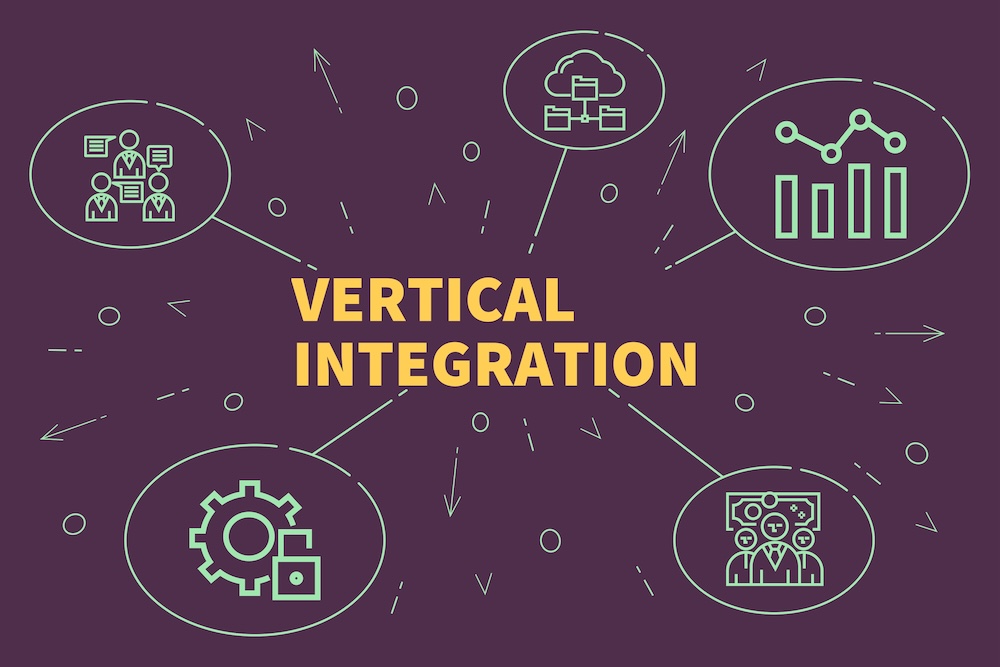
Vertical Integration Explained: A Guide for Multifamily Investors
What’s Vertical Integration?
Vertical integration in business refers to a company’s ownership or control over multiple stages of its production process or supply chain. It involves a firm acquiring operations that are further upstream (backward integration) towards raw material sourcing, or further downstream (forward integration) towards distribution and retail. By vertically integrating, a company can gain greater control over its inputs, processes, and outputs, potentially reducing costs and increasing efficiency.
Vertical Integration in Multifamily
A vertically integrated multifamily investment company is a real estate firm that controls multiple stages of the investment process for multifamily properties (such as apartment complexes) under one umbrella organization. This typically includes:
Investment fund team to raise capital for property acquisitions
Acquisitions team to purchase properties
Property management team for day-to-day operations
Construction/development team for renovations and upgrades
Asset management team to oversee investments
Benefits of Vertical Integration
Here are some benefits of Vertical Integration in multifamily business:
Knowledge and expertise: Deep understanding of all aspects of multifamily investing by having specialized in-house teams.
Lower costs: Economies of scale from standardizing materials, labor, and processes across the portfolio.
Accelerated timelines: Better control over project schedules and ability to quickly mobilize resources.
Operational efficiency: Streamlined workflows and communication between integrated business units.
Tenant experience: Ability to provide renters with desirable living arrangements at optimal value.
By integrating these functions rather than outsourcing to third parties, a vertically integrated multifamily firm can operate more efficiently, control costs, and hence potentially deliver better returns to the passive investors.
Degrees of Vertical Integration
Yes, there are various degrees of vertical integration that multifamily real estate investment companies can have. The search results indicate a spectrum of vertical integration approaches:
Fully Vertically Integrated
This means they have in-house capabilities across the entire investment lifecycle, including:
Capital raising/investment funds
Property acquisitions
Property management
Construction/renovations
Accounting/finance
Having all these functions under one umbrella allows for complete oversight, control over quality, accelerated timelines, and cost efficiencies from economies of scale.
Hybrid Vertical Integration
Other firms take a hybrid approach, keeping some functions in-house while outsourcing others to third parties. This hybrid model aims to strike a balance—maintaining control over critical components like renovations while avoiding excessive overhead from directly managing all aspects themselves. For example, many companies handle everything from raising capital to managing properties but do not undertake construction in-house. Again, there are varying degrees of vertical integration possible. Determining the point at which a company transitions from being hybrid to minimally integrated is highly subjective and depends on specific operational choices.
Minimal Vertical Integration
At the other end of the spectrum are multifamily investment firms that operate with minimal vertical integration. These companies may only handle functions like raising capital and acquiring properties, while outsourcing asset management, property management, construction etc. to external vendors and third parties.
Drawbacks of Vertical integration
While Vertical Integration has benefits, it also has its own drawbacks. Here are some of the drawbacks:
Recruiting and retaining talent
Vertically integrated firms need to have highly skilled in-house teams across multiple disciplines like acquisitions, construction, property management, accounting etc. Attracting and retaining top talent in all these areas can be difficult and costly.
Overhead costs
Bringing more operations in-house increases overhead costs like payroll, benefits, office space etc. For smaller firms, the fee income from a limited portfolio may not justify having full vertical integration
Shifting priorities
There is a risk that a fully vertically integrated firm may start prioritizing fee generation over investment returns, deviating from their core focus of maximizing profits for investors.
Conclusion
There is no single “right” approach or silver bullet when it comes to the optimal degree of vertical integration for multifamily investment firms. Ultimately, the appropriate level of vertical integration depends on the specific size, investment strategy, and internal capabilities of each multifamily real estate firm. Larger enterprises may be better positioned to capture economies of scale with comprehensive in-house integration across all functions. Smaller operators, on the other hand, could find a hybrid model with selective outsourcing to be a more pragmatic approach that avoids excessive overhead. There is no one-size-fits-all solution – multifamily investors must carefully evaluate their own situation and priorities to determine the right vertical integration strategy for their business.

Leave a Reply